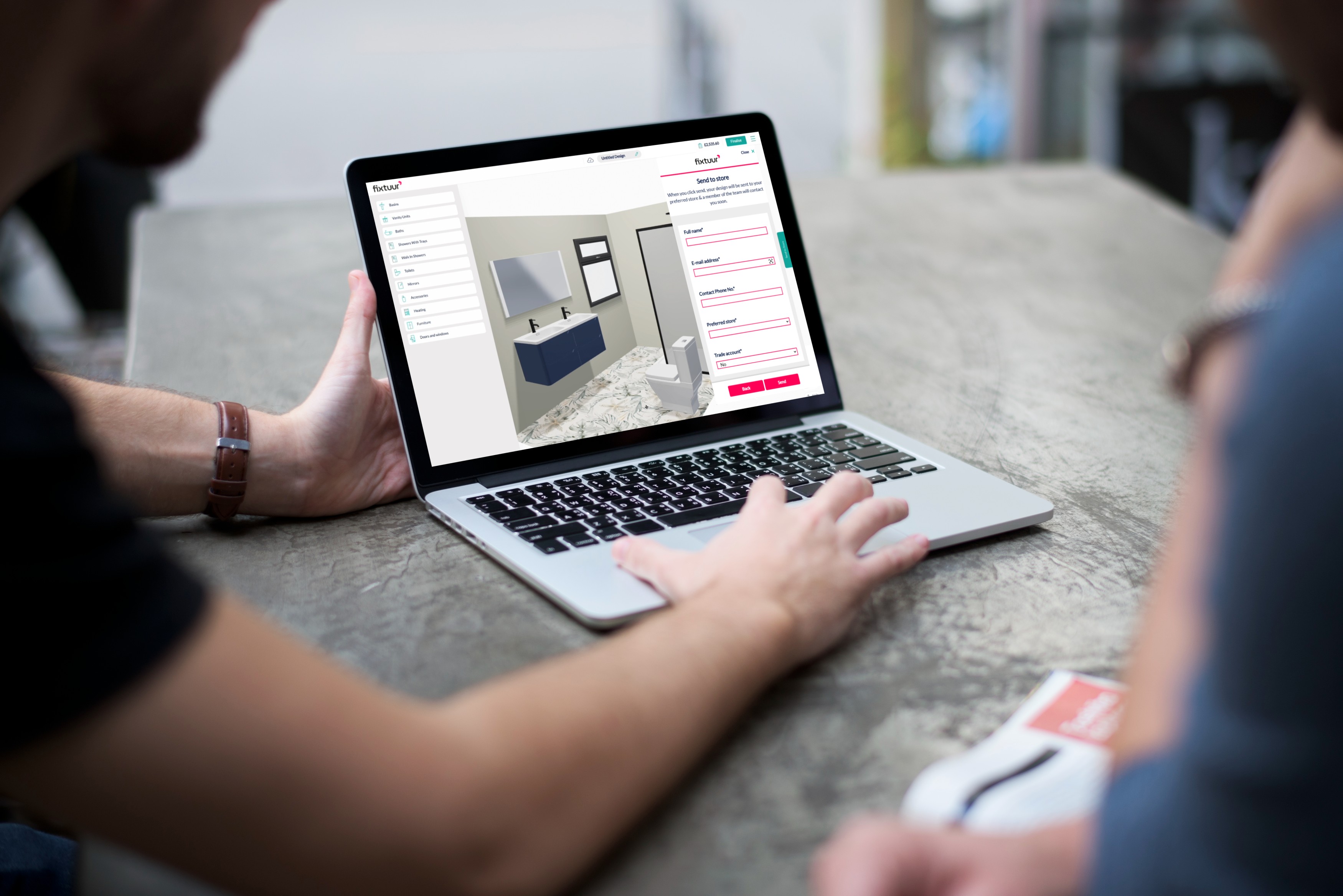In 2026, the divide between online and in-store shopping will converge further than ever. While there is a growing number of 'online-only' buyers, the reality in bathroom and furniture retail is that a large number of shoppers still want to browse online, gather ideas, design and build their perfect space, then walk into a store to see it come together with expert help. For furniture and bathroom retailers, this multi-channel approach represents both a challenge AND an opportunity at the same time.
The new expectation: inspiration meets interaction
Today’s online shoppers expect more than a product page and static product photo. They expect a journey. They want to start online, scrolling for inspiration, comparing materials, and designing spaces in 3D, then move effortlessly into the store for validation and guidance before making the purchase.
A perfect example is the bathroom planner. A shopper can design their bathroom online: position the bath, select tiles, choose fixtures, and experiment with different layouts. Once they’re happy, they can send that design directly to the store, where an expert reviews the plan, checks compatibility across items, and ensures everything is right before buying. It’s a simple loop from digital discovery to in-person assurance, and it’s what gives customers the confidence to buy. For a deeper dive into why these tools matter, see Why 3D Room Planners Are the Secret to Higher Sales and Fewer Returns.
![Fixtuur Bathroom Planner 3 [FA]](https://www.fixtuur.com/hs-fs/hubfs/Sales%20Email%20Images+GIFs%202025/Product%20GIFs/Bathroom%20Planner%20GIFs/Fixtuur%20Bathroom%20Planner%203%20%5BFA%5D.gif?width=640&height=480&name=Fixtuur%20Bathroom%20Planner%203%20%5BFA%5D.gif)
The hybrid experience works both ways
The journey doesn’t just run online → store; it also flows from store → home. You might see a product in-store, a bath, a sideboard, a dining table and want to check how it looks at home before committing. With Augmented Reality (AR), shoppers can view products in their actual space, confirm the fit, and see how finishes work with existing décor. See Why Augmented Reality in Furniture & Bathroom Retail Is No Gimmick - It’s a Game Changer. And when a design is built online, you can share it with a partner to agree on the final details before purchasing - a small touch that reduces indecision and returns.
IKEA’s lesson in hybrid experience
Few retailers illustrate this better than IKEA. With its 3D kitchen-planning experience, IKEA states that it brings over 1.75 million design projects to life each year. Customers plan and personalize at home, then finalize in-store with expert guidance. Inside the app it provides the ability to book an appointment date and time. It’s a clear signal of where retail is heading: intuitive digital tools paired with human reassurance.

This is multichannel at its best: empowering digital experiences supported by expert advice. It’s one of the principles behind Fixtuur’s approach too: let shoppers explore, visualize, and configure online, then carry that confidence into the store.
How retailers can bridge the gap
To create a seamless online-to-store experience, align the digital and physical touchpoints your customers already use:
1) Let inspiration flow both ways.
Bring online tools into your stores with tablets, displays, or QR codes that let shoppers pick up where they left off online.
2) Create continuity through shared designs.
Use planners and configurators that save customer designs to their profile or a shareable link. Store teams can open those plans in-store, using the same bathroom planner to co-create adjustments and help customers visualize their ideal space in real-time. It also enables in-store, trained CAD users to take the visualizations a step further towards booking an installation.
3) Show, don’t tell.
Your website isn’t just a catalogue; it’s a confidence builder. Integrating tools like Fixtuur’s 3D Configurator and surface-rich 360 product views helps shoppers explore finishes and components without guesswork. For context, see How 3D Configurators Elevate eCommerce Buying Confidence.
4) Make AR part of the decision, not the afterthought.
Let customers preview products at home directly from PDPs, to validate both aesthetics and dimensions before they visit the store. This reduces costly indecision and supports faster, more confident purchases. More on the impact in 6 Retail Brands Leading the Way in AR Shopping.
5) Repurpose visuals across channels.
Build once, use everywhere. Scalable 3D assets power PDP imagery, email campaigns, paid social, in-store screens, and assisted-selling tools. This keeps the story consistent and the team efficient, see Beyond the Flat Image: Why 3D Asset Creation for Retail Is Worth the Leap.

The result: choice, confidence, and connection
The future of multichannel retail isn’t about being everywhere, it’s about connecting everything. When a shopper can dream, visualize, and decide online, then step into a store to make it real, every interaction feels purposeful. The result? Fewer returns, happier customers, and a retail experience that stands out for all the right reasons.
Unify Your Shoppers' Journey
If you’d like to explore how scalable 3D content and visualization tools can unify the journey from sofa to showroom then get in touch.

